The rich cultural tapestry of India is interwoven with diverse traditions and practices that have stood the test of time. Among the myriad of fascinating rituals and celebrations, the Bhoota Kola tradition holds a special place. Rooted in ancient folklore and spiritual beliefs, this mesmerizing ritualistic performance is a unique blend of dance, music, and drama. Let’s delve into the world of Bhoota Kola: the Tulu legacy of summoning spirits and explore its significance, history, and cultural impact.
Bhoota Kola is believed to have drawn inspiration from Yakshagana, a highly renowned and extensively practised folk dance in the coastal regions of Karnataka. Certain Bhoota Kola rituals even incorporate the daring act of walking on a bed of hot coals.
Unveiling the Essence of Bhoota Kola
The annual cultural tradition known as “Bhoota Kola” is observed in Tulunadu, a coastal region in Karnataka predominantly inhabited by Tulu-speaking communities. It is a ritual called nema or kola performed for ghosts/gods. Among the Tulus, ‘Bhoota’ is the equivalent of ‘Daiva’ or ‘God’. The roots of this practice can be traced back to ancient times, and it has gained significant recognition through the popular Kannada film “Kantara”.
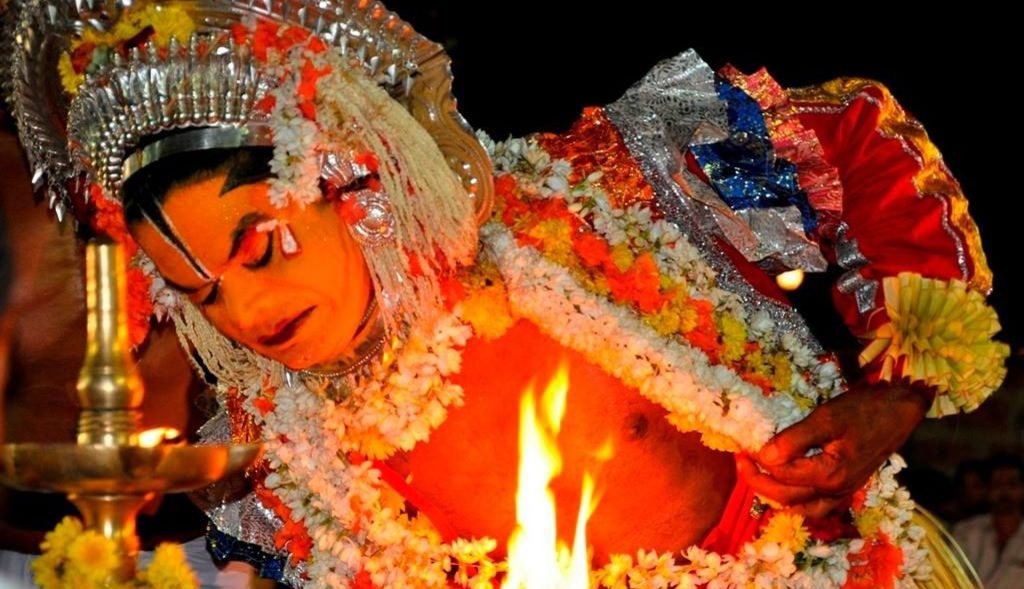
Bhootaradhana, also known as Bhoota Kola, is a form of spirit worship that has its roots in the ancient Dravidian culture and is deeply ingrained in the local folklore and religious practices. The word “Bhootaradhana” is derived from the combination of two words: “bhoota,” meaning spirit or deity, and “aradhana,” meaning worship. The ritual involves invoking and propitiating various spirits or deities, known as bhootas, who are believed to have the power to influence human lives and bring both blessings and misfortunes.
The Performers and Their Mastery
Bhoota Kola involves the participation of a skilled individual who is believed to embody the divine essence during the ritual. The individual is believed to possess a divine connection with the spirits and can communicate with them. They play a crucial role in conducting elaborate ceremonies and ensuring the proper appeasement of the bhootas.
During the Bhootaradhana ritual, the bhoota performers adorn themselves in vibrant costumes and elaborate headgear representing the specific bhootas they are invoking. Panjurli, Bobbarya, Pilipoota, Kalkuda, Kalburti, Pilichamundi, and Koti Chennaya are among the well-known deities (Bhootas) venerated in Bhoota Kola ceremonies. The face is painted and wrapped in a Siri made of coconut feathers. The costumes are intricately designed and are believed to embody the spirit’s physical form. It is an aggressive performance, coupled with a fierce dance and rituals. The performers engage in spirited dances, accompanied by traditional music and drumming, to invoke the presence of the spirits.
The Cultural Significance and Preservation Efforts
The worshippers believe that through Bhootaradhana, they can seek the blessings of the spirits and seek their protection from evil forces. They also believe that the spirits possess the ability to heal physical and mental ailments and provide guidance in matters of personal or community importance. The rituals serve as a means of establishing a symbiotic relationship between humans and the spirit world.
Bhootaradhana is not merely a religious practice but also a cultural and social event that brings the community together. It provides a platform for the preservation and expression of local traditions, folklore, and mythology. The rituals are passed down through generations and hold significant cultural value in the communities where they are practised.
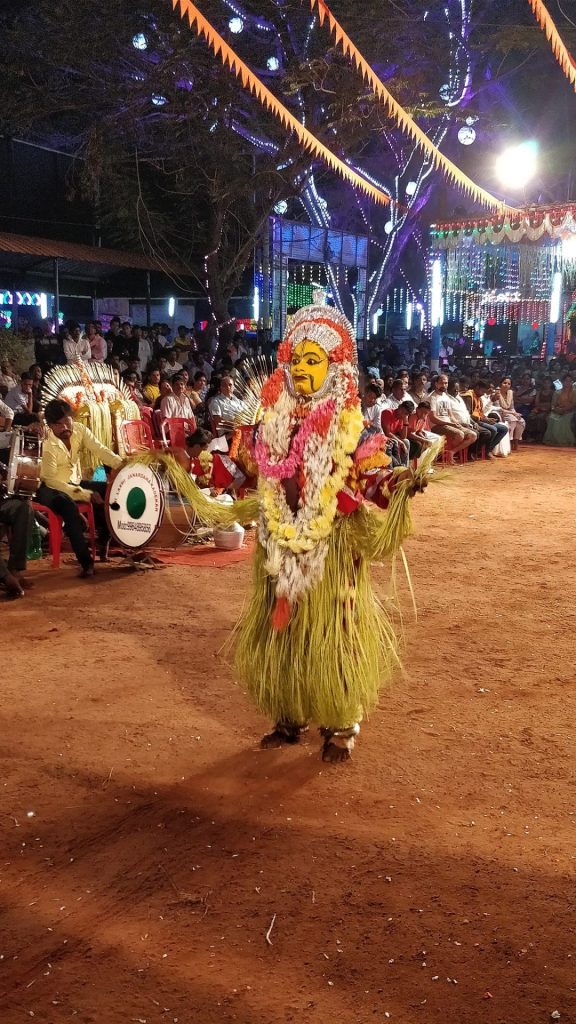
While Bhootaradhana continues to thrive in certain parts of Karnataka, its popularity and practice may vary across different regions and communities. It remains a fascinating aspect of the state’s cultural fabric, showcasing the rich and diverse religious and spiritual traditions that have shaped the state’s identity over the centuries.
Bhoota Kola is not a tourist-oriented occasion and receives limited promotion in mainstream media. Nonetheless, there are no restrictions on individuals who wish to witness these performances.
Conclusion
The Bhoota Kola tradition of Karnataka stands as a testament to the vibrant cultural heritage of India. Its amalgamation of mythology, spirituality, and artistic expressions makes it a captivating spectacle for both locals and visitors. As we celebrate and cherish this ancient tradition, it becomes crucial to ensure its preservation for future generations. Bhoota Kola not only entertains but also offers a profound connection to our roots and an opportunity to delve into the depths of India’s rich folklore.
References
Bhoota Kola – Bhootha Aradhane
Bhoota Kola: The Tulu tradition of invoking spirits
Invoking The Spirits With Bhuta Kola


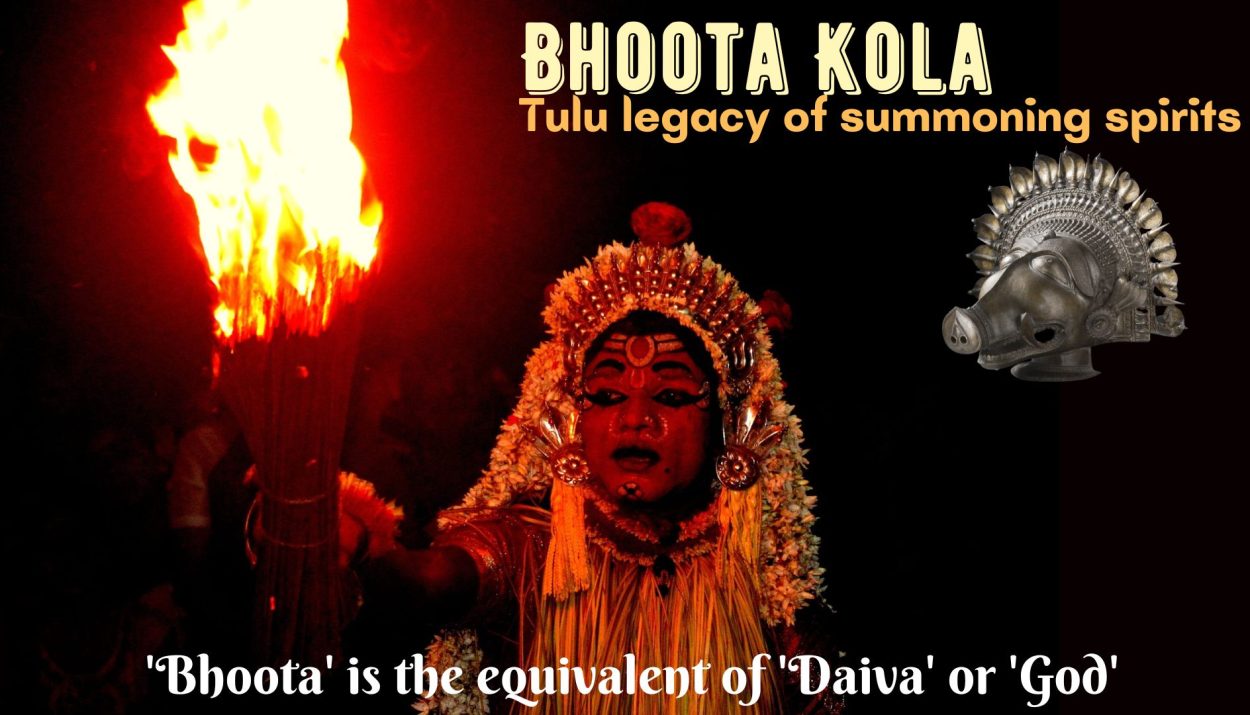

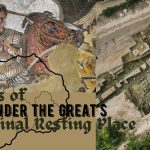
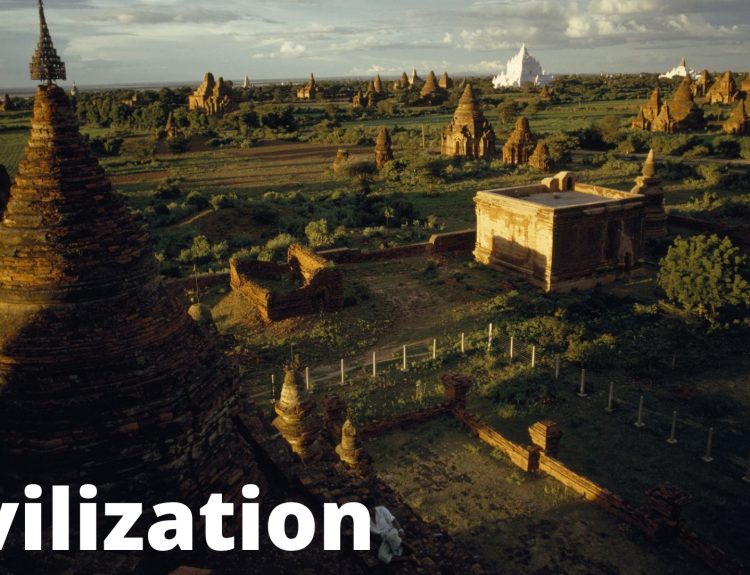
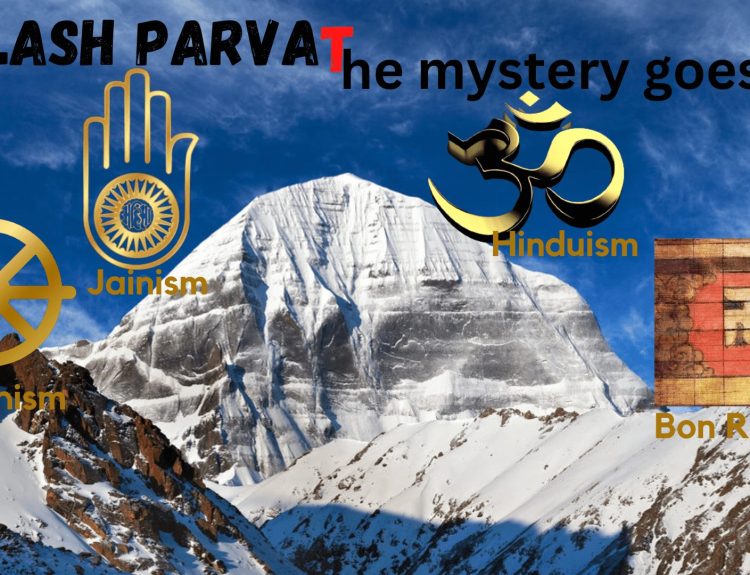
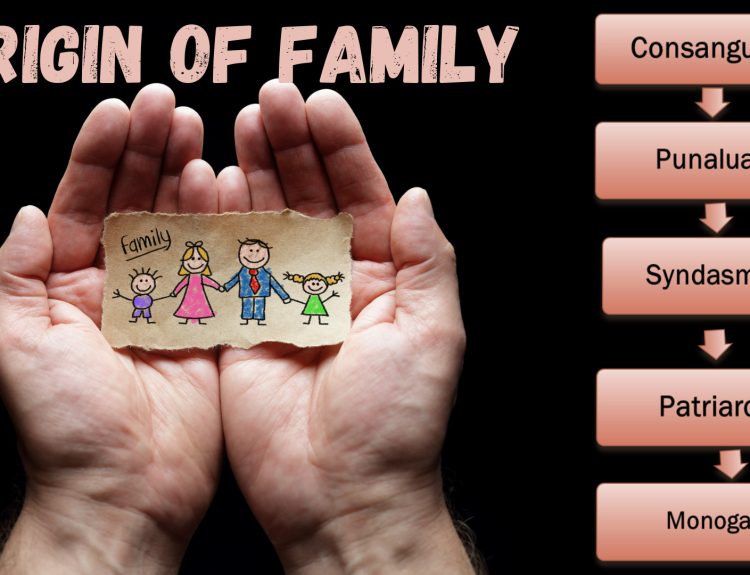
1 Comment
EDELLMANN
5 months agoLooking forward to read more. Reading more. Great blog. Really.